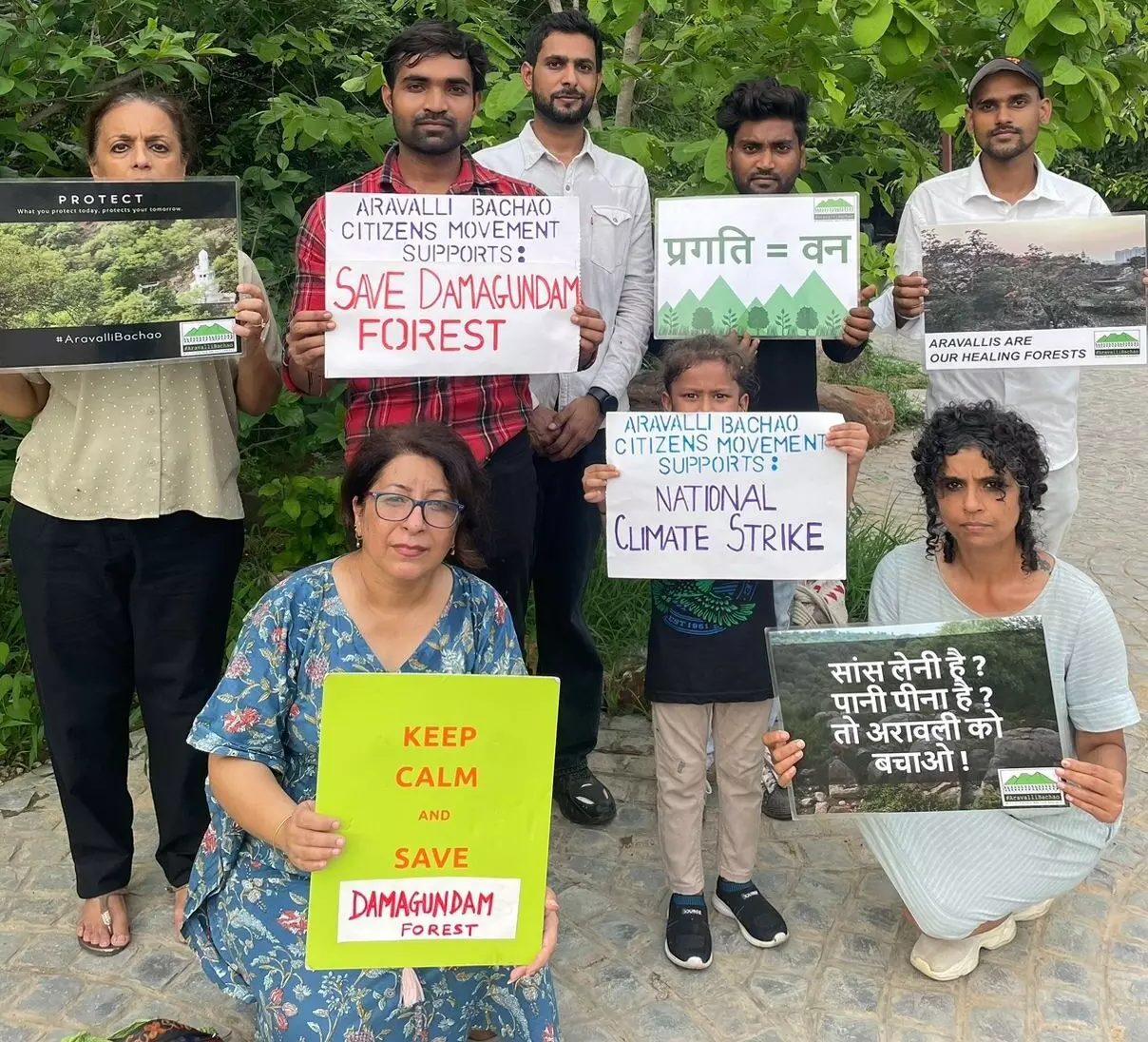‘Save Damagundam Forest’: Nationwide protests against VLF radar station in Ananthagiri Hills
The radar project, being built at an estimated cost of around Rs 2,500 crores, consists of a VLF radar station, proposed by the Eastern Naval Command, Vishakhapatnam.
By Newsmeter Network
Hyderabad: Citizens and environmental activists across India have come out to protest after the Union Government and Telangana State government decided to allocate pristine forest lands in the Ananthagiri Hills to the Indian Navy for a Very Low Frequency (VLF) radar station.
The team, under the banner of ‘Save Damagundam Forest’ overseeing the protests, has announced that demonstrations have been held in over 18 cities, including Hyderabad, Vizag, Delhi, Jammu, Bhopal, Warangal and other locations across the country against the government’s decision.
How can the government’s radar project affect the environment?
The radar project, being built at an estimated cost of around Rs 2,500 crores, consists of a VLF radar station, proposed by the Eastern Naval Command (ENC), Vishakhapatnam. It aims to communicate with ships and submarines using low-frequency radio waves.
The project is expected to be inaugurated by Union home minister Rajnath Singh and chief minister A Revanth Reddy on July 28, with preparations underway by local representatives and officials.
For over a decade, the Damagundam Forest Protection Joint Action Committee and environmentalists have raised serious concerns about the impacts of the project. The Damagundam forests in Puduru Mandal, Vikarabad District, are rich in biodiversity, hosting hundreds of rare tree species, including medicinal plants, and valuable flora and fauna.
According to the group, the project would necessitate the cutting down of approximately 12 lakh trees to clear 2,900 acres of forest land. This area includes 1,400 acres for Antenna Park, 1,090 acres for technical areas, 310 acres for official and residential complexes, and 100 acres designated as a ‘safe zone’ for radiation hazards.
The long-term environmental repercussions of the project pose significant risks to the State and its people. The area serves as a crucial catchment zone, and its destruction could exacerbate flooding in Hyderabad.
Additionally, trees play a critical role in capturing methane gases and storing carbon dioxide, making deforestation of this scale irreplaceable. The loss of these forests threatens the local climate, exacerbating urban heat island effects and disrupting the water cycle and monsoon patterns.
What is the government’s compensation for the project?
The assurances by authorities regarding compensatory afforestation are deemed insufficient, as previous claims of reforestation have often failed to realise the promised ecological restoration.
The lives of around 60,000 people across 20 villages would be adversely affected, along with the livelihoods of small farmers and cattle grazers dependent on the forest. The forest’s destruction would also impact local rivers, such as the Musi and Kagna, through increased soil erosion.
Experts have warned of potential health risks associated with radiation from the project and increased pollen concentrations resulting from deforestation, which could lead to respiratory disorders among residents, including those in Hyderabad. The region is also home to the historically and religiously significant Bugga Ramalingeswara Swamy temple, which is also affected by this project.
PIL revealed the extent of deforestation in Telangana
The Telangana High Court had previously issued a stay on the project for over four years, though this was vacated earlier this year. Notably, a 2020 Public Interest Litigation (PIL) revealed that Telangana had permitted the cutting of 12,12,753 trees over the past five years, marking the highest deforestation rate in the country.
The Telangana State Government asserted that it has eliminated all barriers to this project and that the court has issued orders to take all precautions in accordance with the conditions decided by the government.
However, the group said that there have been neither democratic, informed consultations with the impacted locals nor reports supporting the same. Information about the particular technology being installed and its implications for the surrounding people, animals, forests, and land is non-existent. Thus far, there has been no public information released and zero transparency throughout the endeavour.
In light of the global climate crises and India’s vulnerability to such impacts, it is crucial to reconsider and withdraw the decision to proceed with the VLF radar project in the Damagundam Forests, the group said. “We urge Parliamentarians and State Assembly representatives to prioritise the long-term interests of the people and the environment by halting this project,” the group added.
For further information on the protests regarding the project, call 9059905437.